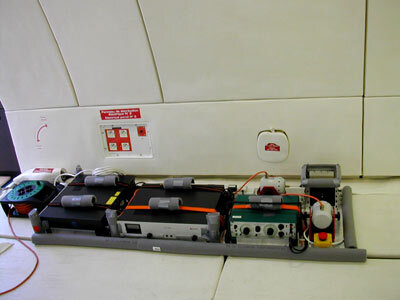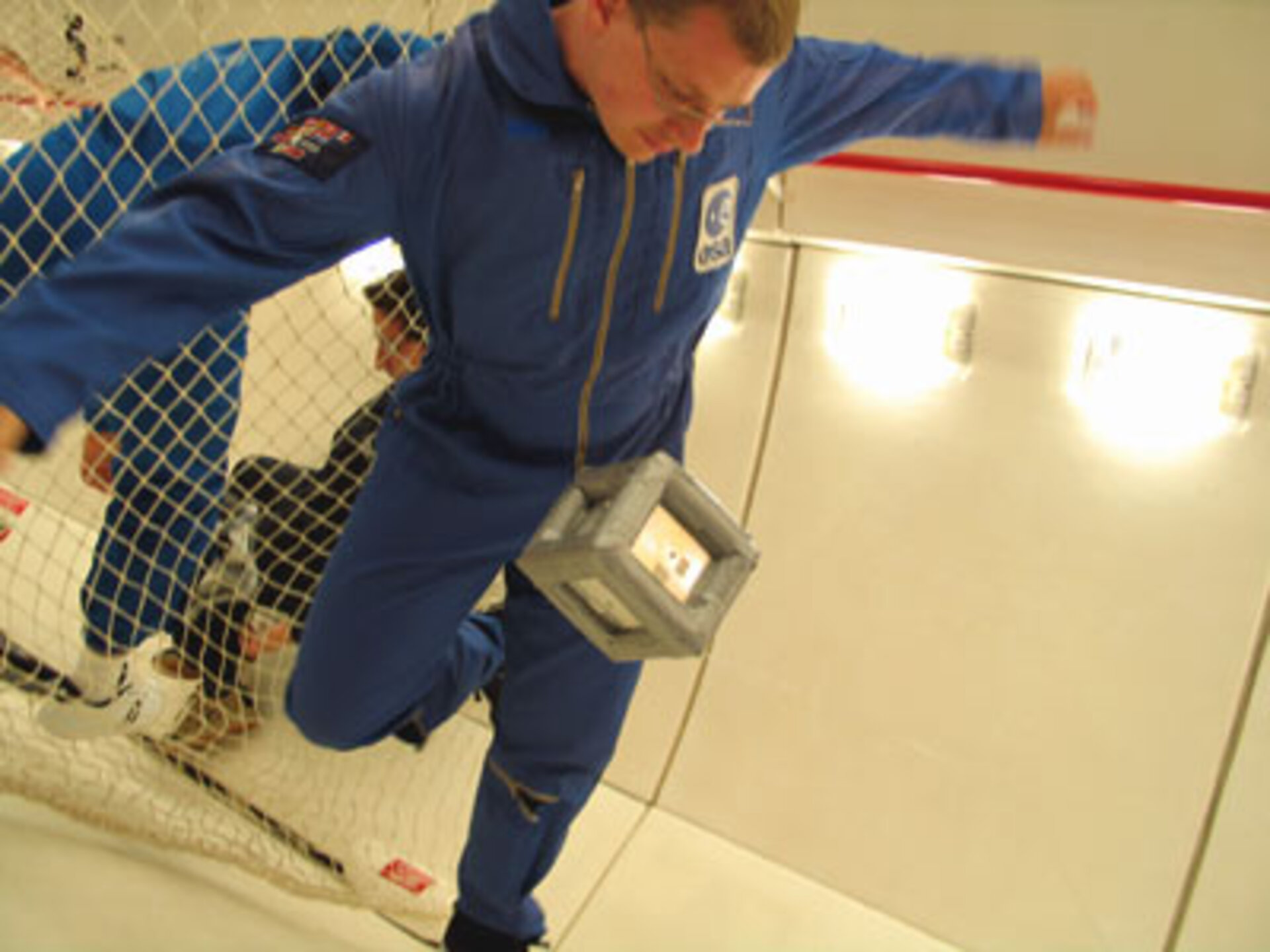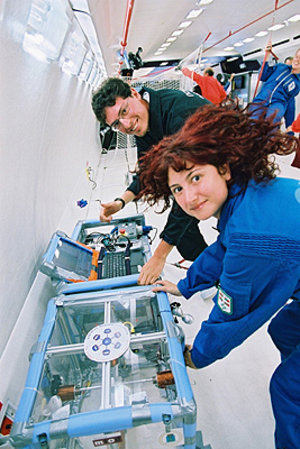7th Student Parabolic Flight Campaign: 2nd experimental flight
Team 1112 - University of Aalborg Today was the last flight day for us. The flight got postponed to 13.00, due to hard wind. Everyone was understanding, and very anxious to go. While waiting we used the time to evacuate Group 2 experiments from the tent, for safety precautions. This allowed everyone to work together and show great team spirit.
The delay was forgotten just after take-off, where we got the first feeling of zero-g. It was a bumpy ride to the flight area, and it felt just like a roller coaster.
The first parabola was once again really great, and it took around 3 parabolas to get used to working in zero-g. Our experiment turned out great, we got some measurements for analysis, but since there were more negative and positive g-forces than expected it will take even more analysis than we thought. We got enough data from the experiment, so we think it was a success, although there is still room for improvement.
During the flight we went to the cockpit to get another view of a parabola. This was a really nice thing to watch, the free fall, flashing alarms etc…
Everyone got home safe. It was a wonderful experience for all… just try it, do it, feel free, feel zero-g!
Team 1133 - University of Basque Country
We are very happy because yesterday the experiments went very well. We weren’t sick and we could do all the things that we wanted. In the first parabola, it was very difficult because we weren’t used to zero-g. We only had a problem with the experiment called “Parachute”. The flat part turned around inside the box and didn’t go up and down. We tried to fix this experiment on Tuesday afternoon, but did not know if it would work today during the flight.
Today we received the help of an ESA staff memberon the experiment to replace one of our members that could not fly. We repeated all the experiments to obtain more images from different positions and angles, so we will have more images for the DVD that we plan to create.
The familiarization flight is a very good idea because you can experience this zero-g feeling before the first flying day and you know how your body reacts to the parabolas.
In our case, the experience was very exciting; there is no other place on Earth where you can stay in zero-g. It was a unique opportunity to feel like this.

Team 1124 - Imperial College of Science, Technology and Medicine, University of London
Imperial College London sent a team of 4 students to participate in this year's SPFC. We were selected to investigate standing waves in a box filled with air and water. Theory suggests zero gravity will cause the water to collect along the nodes of the standing waves and form sheets/planes. By using two perpendicular oscillators with varying frequency the idea is to create perpendicular planes and hence form a water box.
Today was the second and final flight of our experiment. Yesterday's flight threw up a series of problems with the experiment, including the fact that the water’s surface tension kept it stuck to the container's sides. We were keen to try our solutions and observe the results! However the day didn’t start so well. Early enthusiasm was replaced by anxiousness because of the bad weather. We were afraid the flight would be cancelled, but thankfully it wasn't.
At 13:10 we took off and flew to Corsica and calmer skies. In the first 5 parabolas we realised that lower frequencies broke up the water into bubbles, preventing the previous day's problems. In addition, by fixing the frequency and altering the phase, we could obtain definite “dumping” of the bubbles in planes in the box. This proved much more successful, and we were able to film several different parabolas.
Unfortunately, even the slight microgravity during some parabolas was dominant over the potential pressure field we tried to set up, limiting our results. In the future more powerful amplifiers and an overall larger scale with more stable zero gravity should let the water planes coalesce more.
On the human side, we were able to experience the wonder of spinning without falling down, and generally the amazement of floating and learning how to “fly” in a truly 3D environment! We even had press up competitions with another team!
SPFC is definitely an awesome experience for the study of science.
Team 1024 - Université Bordeaux 1
The Injection team is composed of four students from the aeronautical maintenance institute of the university of BORDEAUX I. The objective of our experiment is to repair a honeycomb composite material by an injection of epoxy resin.
Thanks to ESA, we had the opportunity to demonstrate that this repair solution, already used in the aeronautical field, can be applied in microgravity conditions. Two parabolic flights were performed on 6 and 7 July on the Airbus A300.
The first flight, performed on the Tuesday 6 July, was a success and demonstrated the feasibility of the injection in microgravity.
The second flight was the confirmation of the first one. Two more samples were repaired. Some samples of the first flight have already been tested in 3-points flexion and the results are encouraging.
Furthermore, this parabolic flight campaign has been a great experience for each member of the team. The feeling in microgravity and the research and cohesion between the teams was unforgettable.





